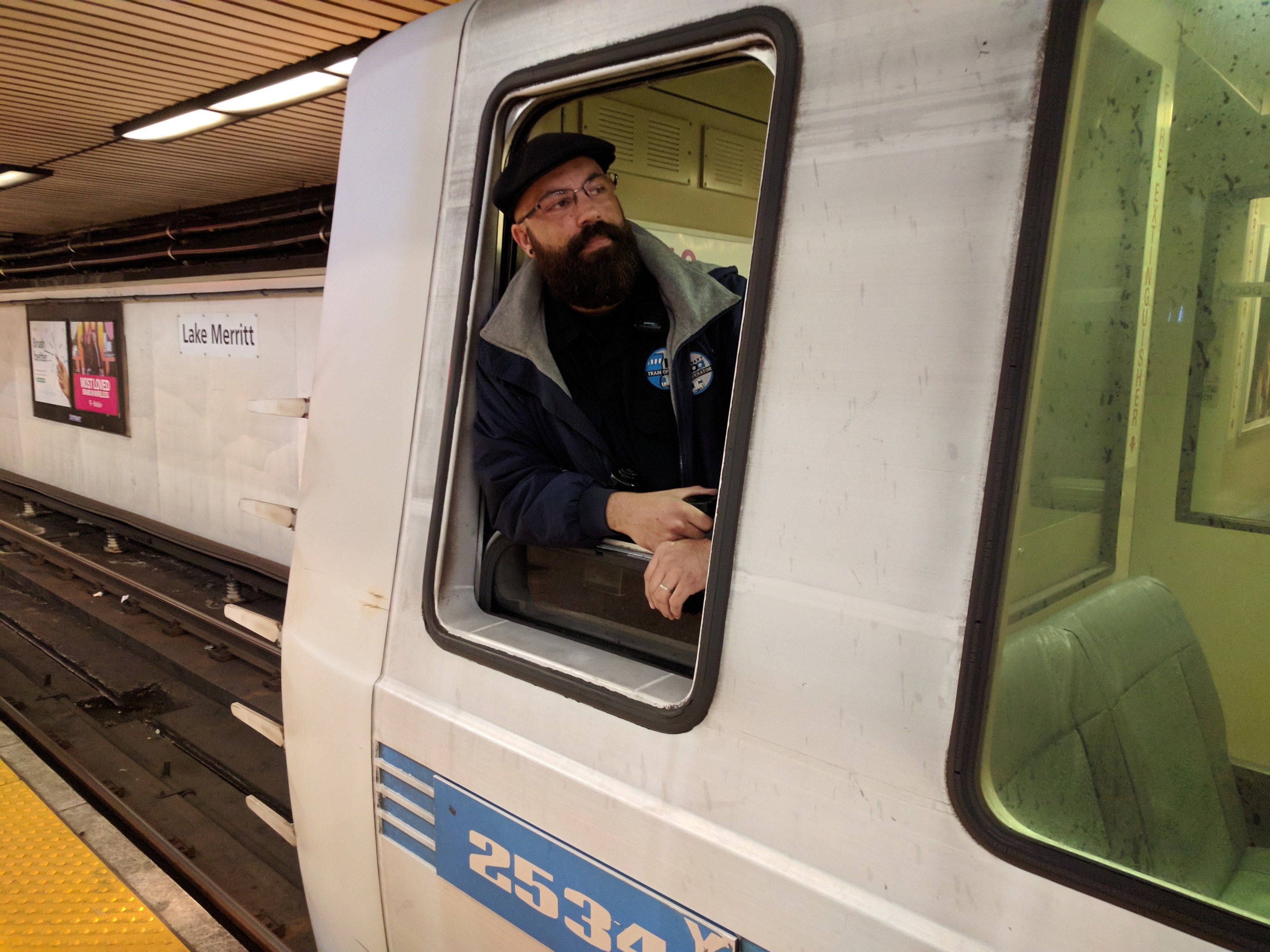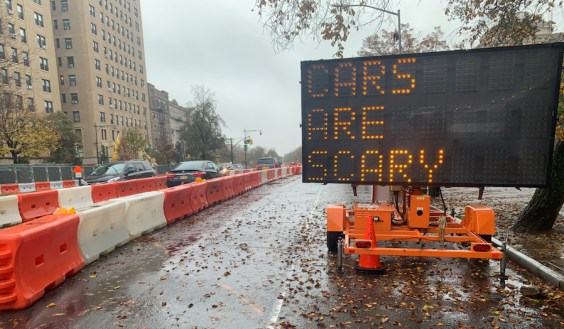Note: Metropolitan Shuttle, a leader in bus shuttle rentals, regularly sponsors coverage on Streetsblog San Francisco and Streetsblog Los Angeles. Unless noted in the story, Metropolitan Shuttle is not consulted for the content or editorial direction of the sponsored content.
Somewhere out there, there's a man who jumped on the BART tracks under Market Street to get a dropped valuable. That man should appreciate BART operator Damian Lacey (seen in the lead image), who was alert and slammed on the brakes, saving his life.
Today, the San Francisco Transit Riders handed out cards (below is a capture of the front--the back is blank) on which riders can thank the people who work hard to make the trains and buses arrive on time (usually).
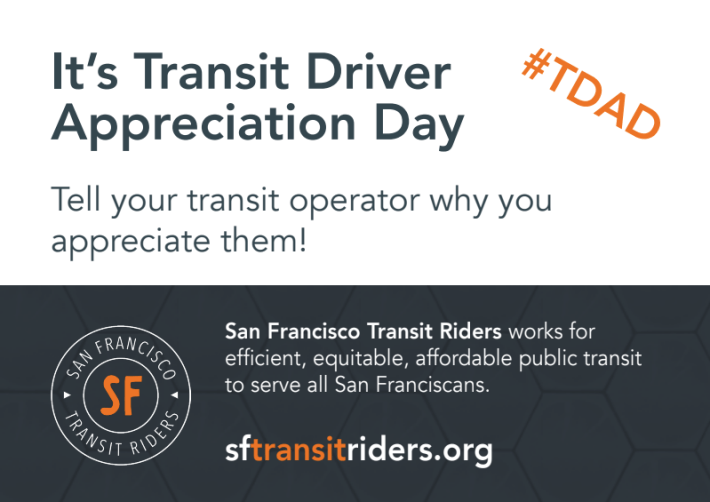
Streetsblog expressed its appreciation by joining a group of train operators early this afternoon in their break shack set up in the median of I-580, at the end of the Dublin/Pleasanton line, for a ride-along towards Daly City.
Lacey has been with BART since 2011. Before that, he was a letter-carrier with the U.S. Post Office. Work starts for BART operators sometimes as early as 4 a.m., with a touch of understandable irony. "Most people drive to work," he explained. That's because, of course, there's no train to take you to run the first train.
Operators are slowly getting trained up on the new fleet. "The training takes place in three phases, for a total of 11 days."
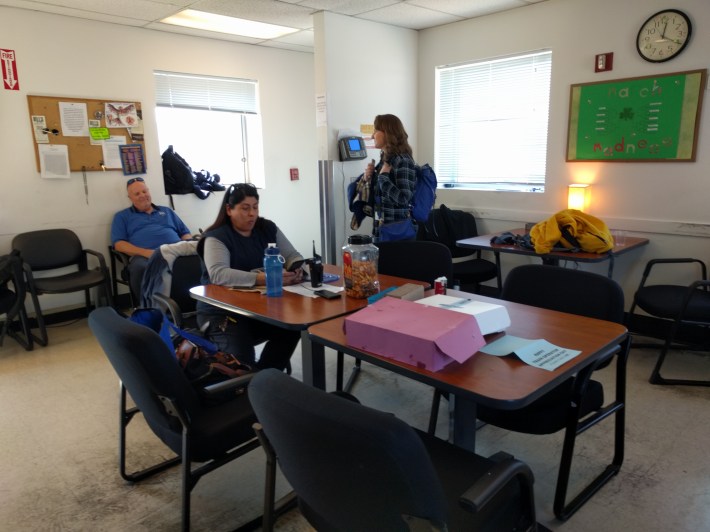
What's the difference with the new fleet?
Mostly, from what Lacey explained, it's the available information on the train's health, performance and safety. For example, the new trains have front-facing cameras so if there's an incident, a record exists of it. There are also cameras in each car that are connected to the operator's cabin so he can see what's going on if someone hits the emergency button. There's also an indicator light "which tells you exactly what the problem is and where it is you can radio it in to Tango," he said. Tango is the radio call-sign of the operations control center.
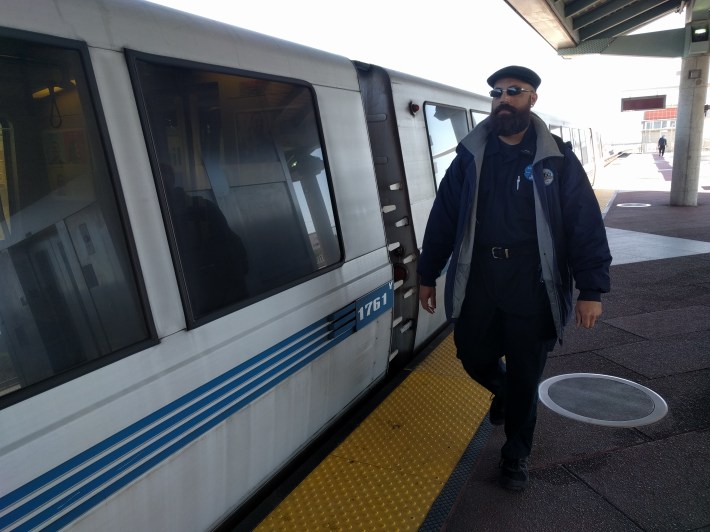
Now, as many readers are aware, regardless of whether it's a new "fleet of the future" train or its legacy fleet (which is what Lacey had on his run with Streetsblog today), a BART operator normally doesn't actually "drive" the train. That's done by computers.
The operator is there for safety and maintenance reasons. Lacey's hand rests on the emergency brake--a big red button--whenever the train is entering a station or there's a potential hazard on the tracks so he can apply the brakes in an instant. He's had to do that a few times--we mentioned the time a BART customer jumped onto the tracks to retrieve a dropped valuable (although one has to ask--how valuable could any object be that it's worth jumping onto the tracks in front of an oncoming train?). It wasn't the only time quick reactions saved someone's life. "I had someone throw a satchel into the closing door to try and hold the train, but it got caught instead," he recalled. He was able to stop the train before the passenger was dragged along the platform by the caught strap. "I also had someone try to board with a dog, and the dog's leash got caught in the door." Again, he was able to stop the train before anybody was hurt.
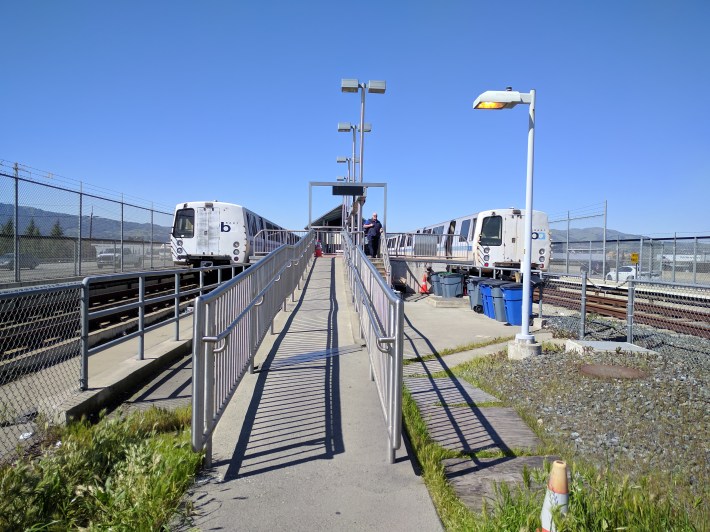
Lacey sets a knob that indicates how many cars there are in the train, and computers automatically guide it into position every time it platforms. The train then opens the doors automatically, but Lacey has to push a button to close the doors, after he's checked to ensure it's safe to leave the station. Other than that, the train drives itself. On the occasions the automated systems are down on a section of track, he has a manual throttle to move the train.
What's the top speed? 80 mph on some runs, he said. But "the trains can go slightly over 100" on the test track in Hayward.
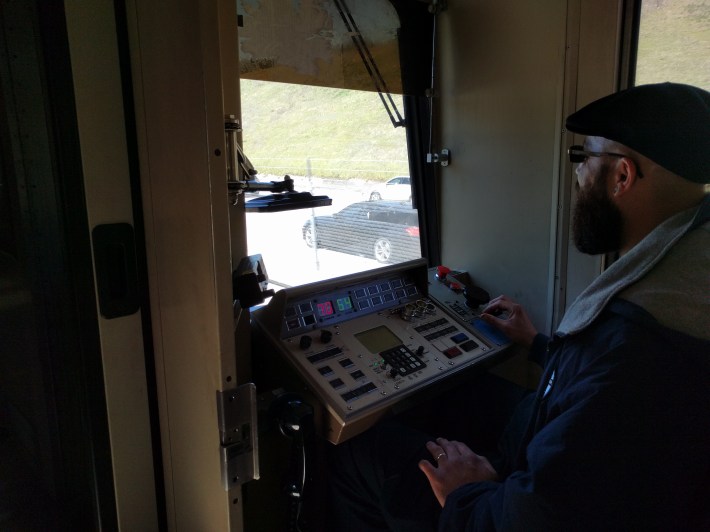
Speaking of safety, Lacey also gets to see how unsafe motorists can be during the portion of his run where the tracks are in the center of I-580. "I see motorists speed every day. Nobody goes the speed limit on 580."
Streetsblog stayed with the train as far as Lake Merritt on a run that was uneventful and quiet, which is all any operator--or passenger--can hope for on a trip.
For more information on the varying responsibilities of BART operators, check out BART's operator web page.
